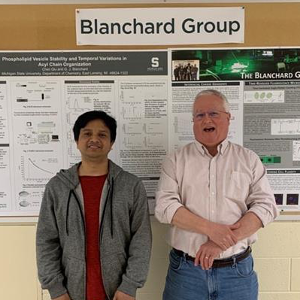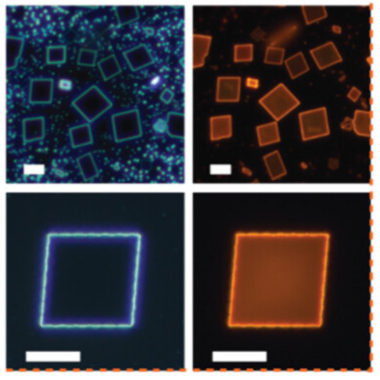Blanchard Lab Discovers the Piezolectric Effect in Liquids
Exciting research from Professor Gary Blanchard and PhD student Md. Iqbal Hossain has ignited a firestorm of global attention. Back in 2015, Chemistry colleague Prof. Greg Swain posed Prof. Blanchard an interesting question regarding some unexpected electrochemical behavior in ionic liquids. Recognizing that ionic liquids have a wide range of applications, the Blanchard group decided to start investigating the unique properties of these interesting materials.

Prof. Blanchard and his team tried for years to reconcile their findings with the behavior of normal molecular solvents and realized “If all of the possible explanations don’t fit, then what impossible explanations might fit?” The piezoelectric effect only came to mind 3 years later after they saw a macroscopic charge displacement in RTILs in rotational diffusion measurements in these ionic liquids.
This piezoelectric effect – at least in solids – is not new. It was discovered during the 1880’s and the direct effect is a force-induced lattice there is a distortion that causes a charge displacement. Testing for the piezoelectric effect is straightforward in solids via methods that result in compressive stress, stretching stress and shearing stress. If any of these physical stresses result in a change in charge distribution that develops a voltage, the piezoelectric effect exists. Liquids, on the other hand, are not “stretchable” or “shearable” in the same sense as solids, leaving only compressive force on a liquid as a way to test for a voltage.
Around the middle of 2022, Iqbal and Dr. Blanchard had their first initial success, but needed find a way to get a better signal. They “hit a home run” by using a standard electrochemical bench in concert with a device developed through a series of designs and modifications by Glenn Wesley, the Department Machinist. They found a variety of ionic liquids actually show a voltage that is directly proportional to the amount of force applied. Iqbal and Dr. Blanchard had discovered the piezoelectric effect in liquids for the very first time!

Soon after publication in Journal of Physical Chemistry Letters, the paper attracted a flurry of media interest with a corresponding astronomical altmetric score (138). This includes interviews from Europe and Asia, with lots of attention via social media platforms. The group is also currently in conversation with Chemical and Engineering News who are also planning a write-up on this new advance.
This exciting discovery has led Dr. Blanchard and Iqbal to consider the range of possibilities for how this new phenomenon may be applied for consumer products. Their vision includes conversion of mechanical energy into electrical energy in a way that doesn’t involve carbon redox chemistry.
With wide-ranging applications expected to reach far beyond the Blanchard group’s imagination, they are currently obtaining “a time-stamp on the intellectual property” as well as to share further developments in their research on this exciting phenomenon discovered at MSU.
Read about more about their discovery here:
https://pubs.acs.org/doi/full/10.1021/acs.jpclett.3c00329
Browse some of the media posts highlighting their work here:
https://spectrum.ieee.org/piezoelectric-liquid
https://phys.org/news/2023-03-piezoelectric-effect-liquids.html



